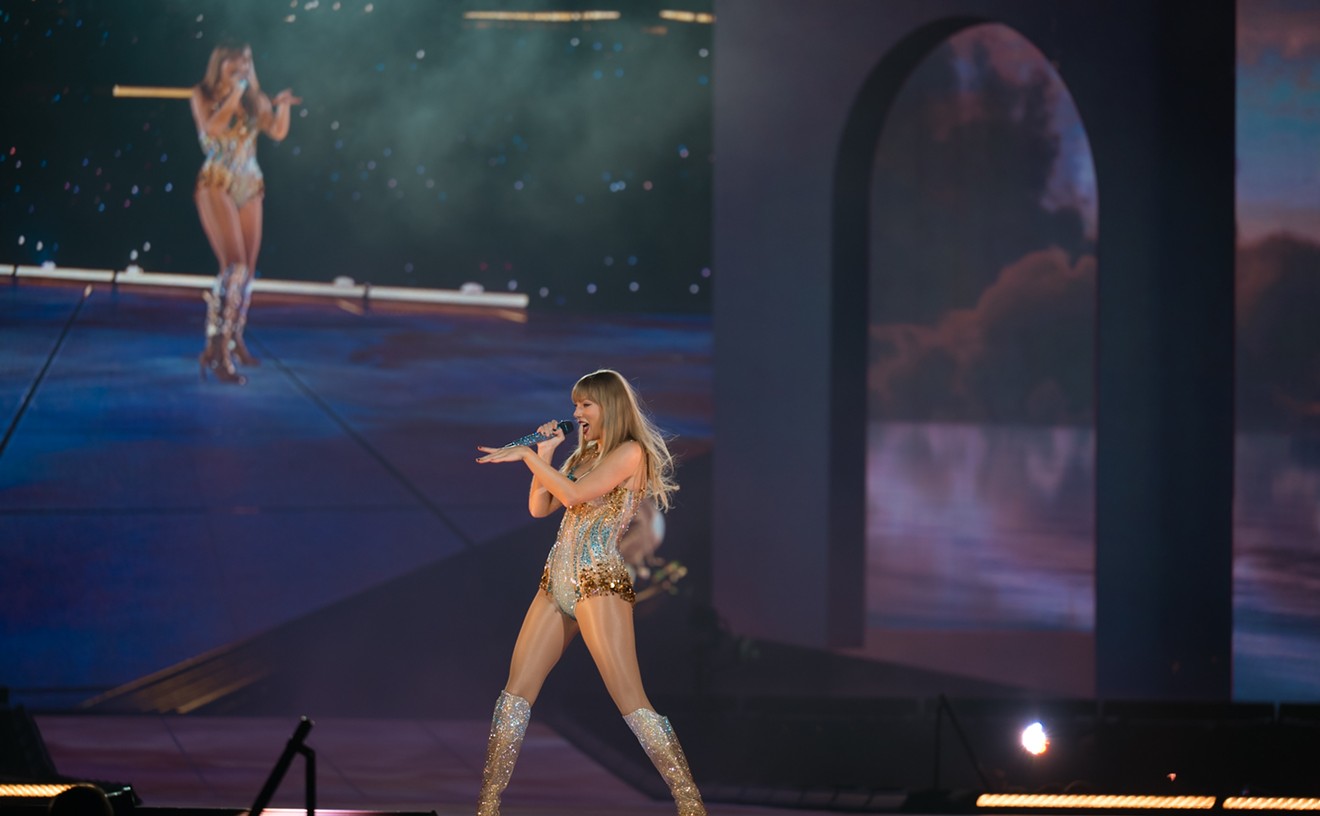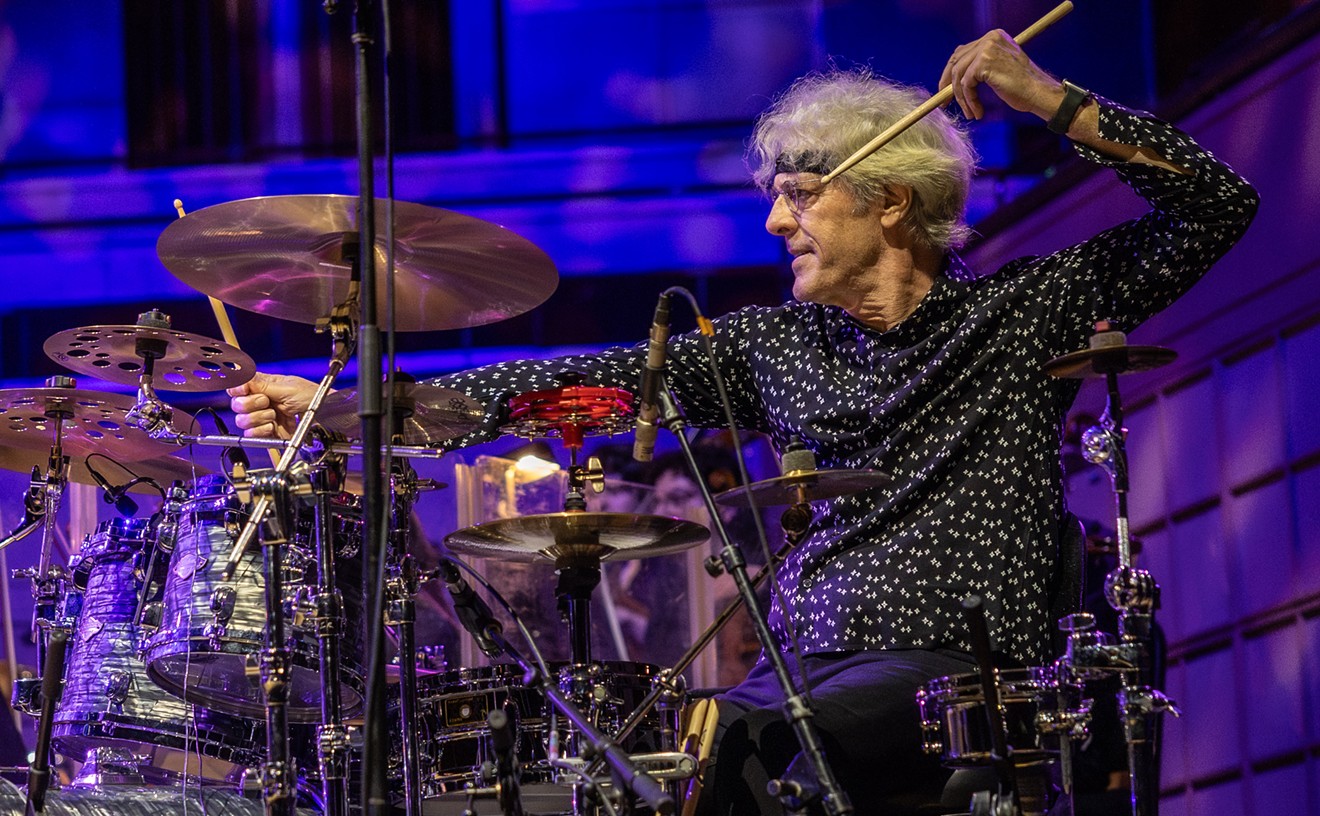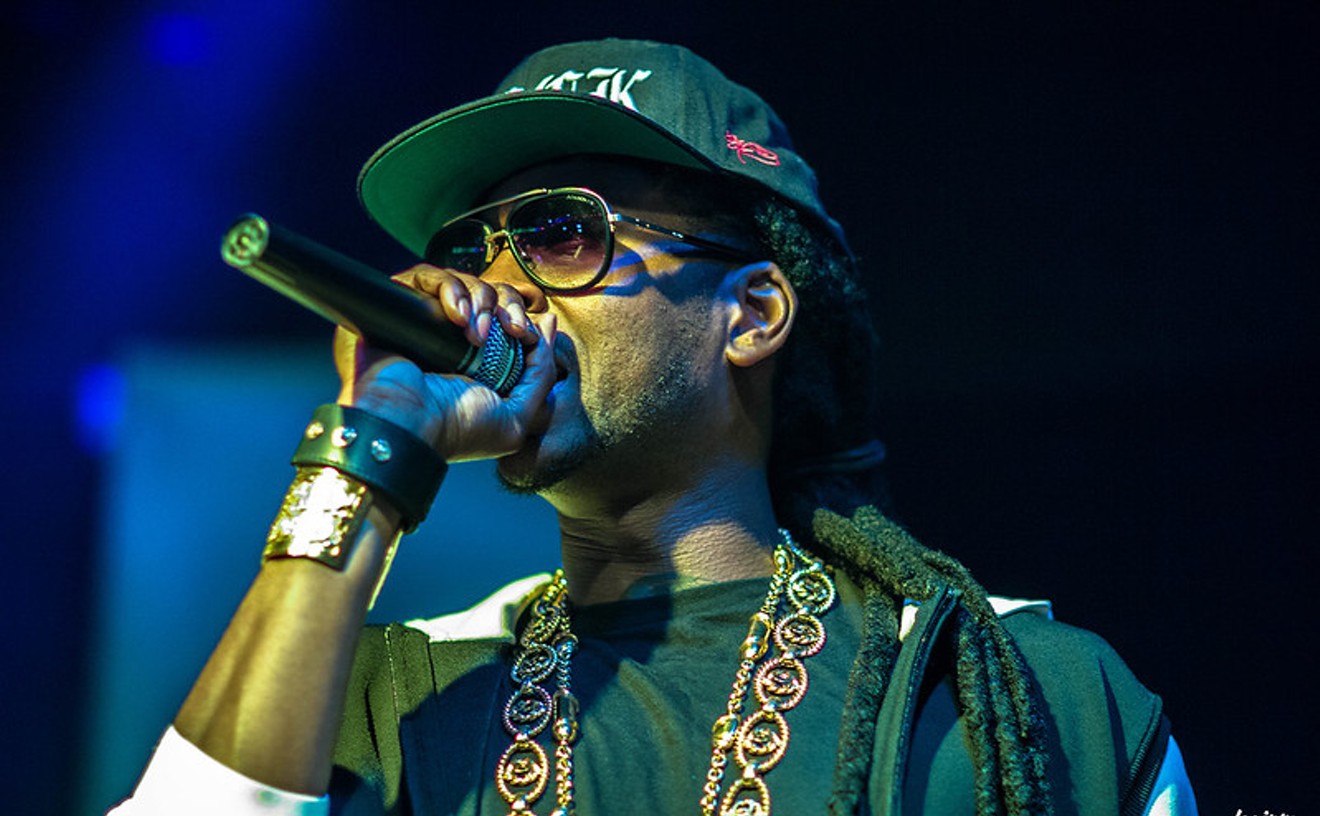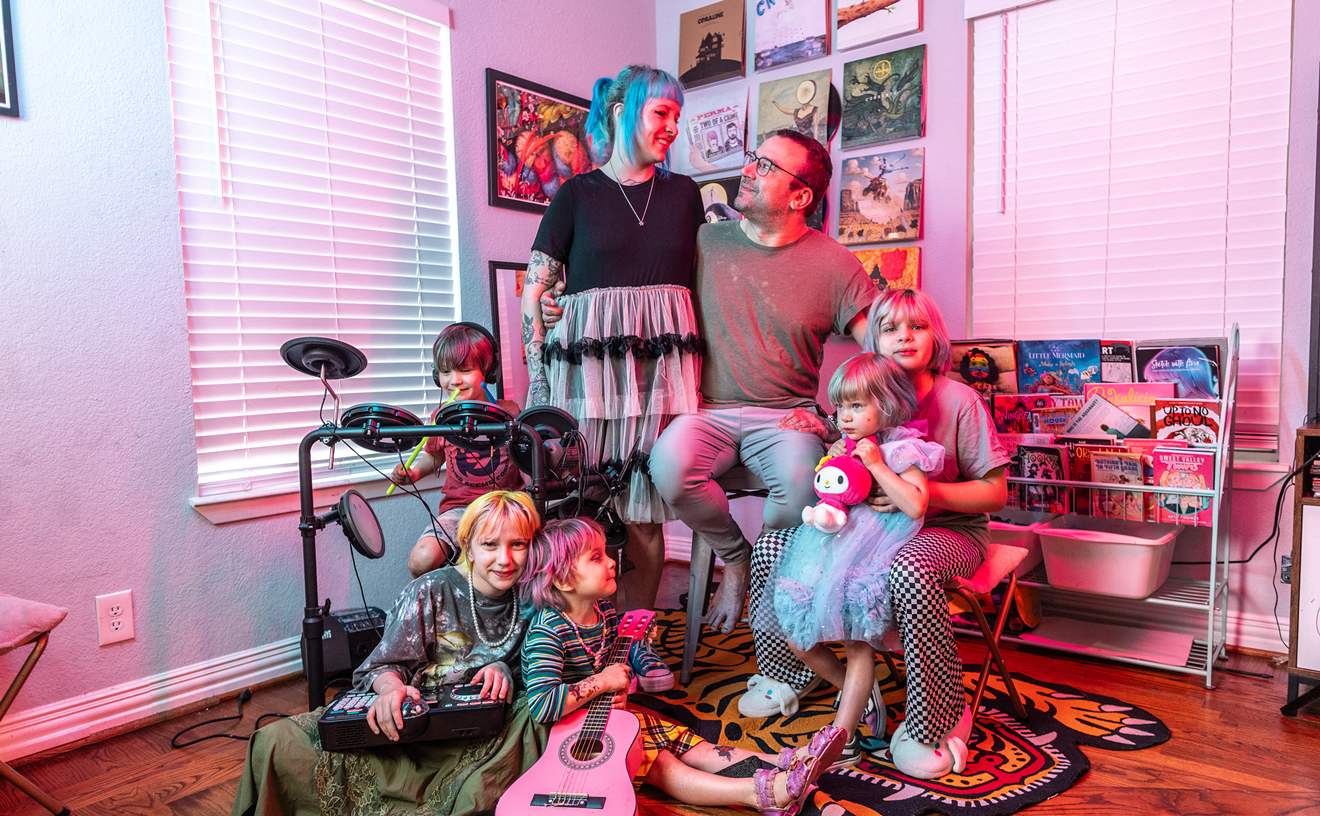This is a city with ample musical history, yet in the rush to find the Next Big Thing playing in some Deep Ellum nightclub, the true heroes of Dallas music are brushed aside. Instead of a misguided herd of bronze cattle thundering through prime downtown real estate, why not erect a statue of Bob Wills or Aaron "T-Bone" Walker? Instead of opening one more ridiculous disco in Deep Ellum, why not open a museum in between all the furniture stores and restaurants?
Hey, there's a solid idea the Deep Ellum Merchants Association could get behind for a change--a Dallas music museum documenting this city's vast musical heritage. It's a stroke of genius, when you think about it, a tourist trap with some genuine value to it--pictures of Leadbelly and Red Garland and Bob Wills, recordings from the old Star Talent and Abnak labels, re-creations of the old Longhorn Ballroom and Jim Beck's old studio on Ross, exhibits that chart the evolution of various genres (say, one that traces the blues from Leadbelly to T-Bone Walker to Freddie King to the Nightcaps to Stevie Ray Vaughan).
There would be display cases filled with local music memorabilia, walls decorated with old concert posters, a gift shop that sells only local music (all the way from the Dallas String Band to Dooms U.K.), and T-shirts emblazoned with Blind Lemon Jefferson photos and Big D Jamboree advertisements. You could even have a refreshment stand that sells drinks like the Deep Blue Something (looks like a Slurpee, tastes like poison) and sandwiches like the Edie Brickell (sprouts and aged cheese on rye).
After all, the West End has its Kennedy museum and conspiracy shrine, and if we can honor Dallas' legacy as the City of Hate, there's no reason why we can't celebrate a part of our past we can actually be proud of. Good Lord--at the very least, it would give the Deep Ellum Merchants Association one more way to sell a few T-shirts.
This, of course, is nothing but a pipe dream. History around here means the day before yesterday, and it's left to the remaining historians who still care to dig up the artifacts and put them on display for the curious few. That means researchers like Dave Oliphant, whose dense and lovingly researched new history book, Texan Jazz, will be published April 24 by the University of Texas Press.
Oliphant, a native of Beaumont who is the editor of the quarterly Library Chronicle published by the Harry Ransom Humanities Research Center at UT-Austin, has done God's work here: For the first time, someone has gathered in one place those jazz (and, by relation, blues) musicians born and raised in the Lone Star State (many in and around Dallas) and snapped their group portrait. Some, like Dallas-born trombone player Keg Johnson, who played and recorded with Louis Armstrong's band in the 1930s, stand on the periphery of that photo; others, like John Coltrane-Miles Davis pianist Red Garland and Charlie Parker mentor Henry "Buster" Smith (both also from here), can be found front row and center.
But no matter their reputations or contributions outside Texas; Oliphant charts a history heretofore told only in pieces. In most jazz histories, Red Garland is barely mentioned, if at all. Yet Oliphant devotes dozens of pages to the pianist, charting his years spent learning his craft from Buster Smith and trumpet player Oran "Hot Lips" Page, the latter being a Dallasite who would become a legend playing with Bennie Moten's swinging orchestra in the early 1930s.
As Oliphant does with almost every one of his subjects, he traces Garland's moves--how he got from Dallas to New York, then back again--and documents his influence on those around him. He places Red in context, picks out the solos without getting lost in the minutiae, surrounds Red with greatness, and then places him in the same league.
Oliphant, at the very least, reminds the reader of Texans' contributions to music that reached far outside the state's borders. Consider: Charlie Christian, born just outside of Dallas, was the first musician to exploit the electric guitar; the Texarkana-born Scott Joplin was the most famous ragtime composer and million-seller in music history; Buster Smith was among the principal influences on the bebop sax sound; and Ornette Coleman led the avant-garde charge from Fort Worth.
"Technically, the Texans have been very impressive," Oliphant says. "You think about Charlie Christian or Ornette Coleman. Coleman was unorthodox but extremely technically accomplished. We think of Texans as sort of lowbrow hillbillies, but on their instruments they're leaders."
Texan Jazz is a travelogue set to a boogie-woogie, bebop, and blues beat; it traverses dirt roads in the outlying towns, excavates the old juke joints, and speaks the long-forgotten names of bands that never recorded but filled Deep Ellum nightclubs in the '20s and '30s. In one terrifically revelatory chapter, Oliphant resurrects such bands as the Alphonse Trent Orchestra--which had a radio show on WFAA in 1925, the first black band in America with such a venue--and the Blue Devils, which would turn out the likes of Buster Smith, Eddie Durham, and even the immortal Lester Young during the '20s and '30s.
In the end, the book is the jazz equivalent of Bill Malone's Country Music U.S.A., a narrative masquerading as history. It's even something of a mystery with a surprise ending each few pages, revealing yet another jazz hero or anonymous contributor who was born here, who played here in obscurity, or who died here after a fruitful career. In Oliphant's world, Texas Tenor James Clay--who died in Dallas last year, a leading light of the bop avant-garde dimmed too soon--receives his proper due alongside Ornette Coleman.
Oliphant doesn't necessarily try to find the common links between these musicians, and doesn't try to bind them by a single thread. They're all Texans, but the leap between Scott Joplin and Fort Worth native Ornette Coleman--who even now sounds a revolutionary honk--is one Evel Knievel wouldn't even try to make.
"That's why I didn't call the book Texas Jazz," Oliphant says. "I do think there are certain stylistic practices that are peculiar to Texas, but I just wanted to avoid that whole issue by focusing on Texans. I mean, the blues certainly appears in all the great Texas jazz musicians, and it's a certain kind of blues that dominates.
"I think when I talk about [Vernon-born trombonist] Jack Teagarden, it's that wide-open freewheeling feeling you get when a Texan plays. [Dallas-born baritone saxman] Bud Johnson, even as late as 1965, on the song 'Sometimes I'm Happy,' blows and goes, and it's free--highly imaginative. It seems like these Texas guys are more relaxed. It's hard to define, but when you hear it, it's like a fresh breeze blows in."
"Street Beat" welcomes e-mail comments and tips at [email protected].










